During breakfast at the Ramada Wyndham, I got irritated that the hotel was playing Fox News, Trump’s propaganda network, on TV. I decided I would make a negative comment about that on Booking.com.
I returned to the North Dakota Heritage Center & State Museum by 8:15. This time, I went to the Adaptation Gallery: Geologic Time, which was fabulous. I learned about prehistoric times and the Ice Age, including dinosaurs.
The museum’s website explained the gallery thus:
From the monstrous sea creatures living in primordial oceans to the rise and extinction of dinosaurs, from tropical swamplands with crocodiles and palm trees to the appearance of elephant-like mammals during the ice age, this is the fascinating story of geology and life in North Dakota. This gallery introduces you to North Dakota as it was at different times in the geologic past, from 600 million years ago to the appearance of humans about 13,000 years ago.
Underwater World
Some 80 million years ago, North Dakota was completely underwater. A much warmer climate meant no polar ice caps and higher sea levels. The warm shallow oceans were part of the Western Interior Seaway that periodically connected the Arctic Ocean with the Gulf of Mexico, splitting the North American continent in two.
Xiphactinus was a 16-foot-long tarpon-like fish.

Xiphactinus
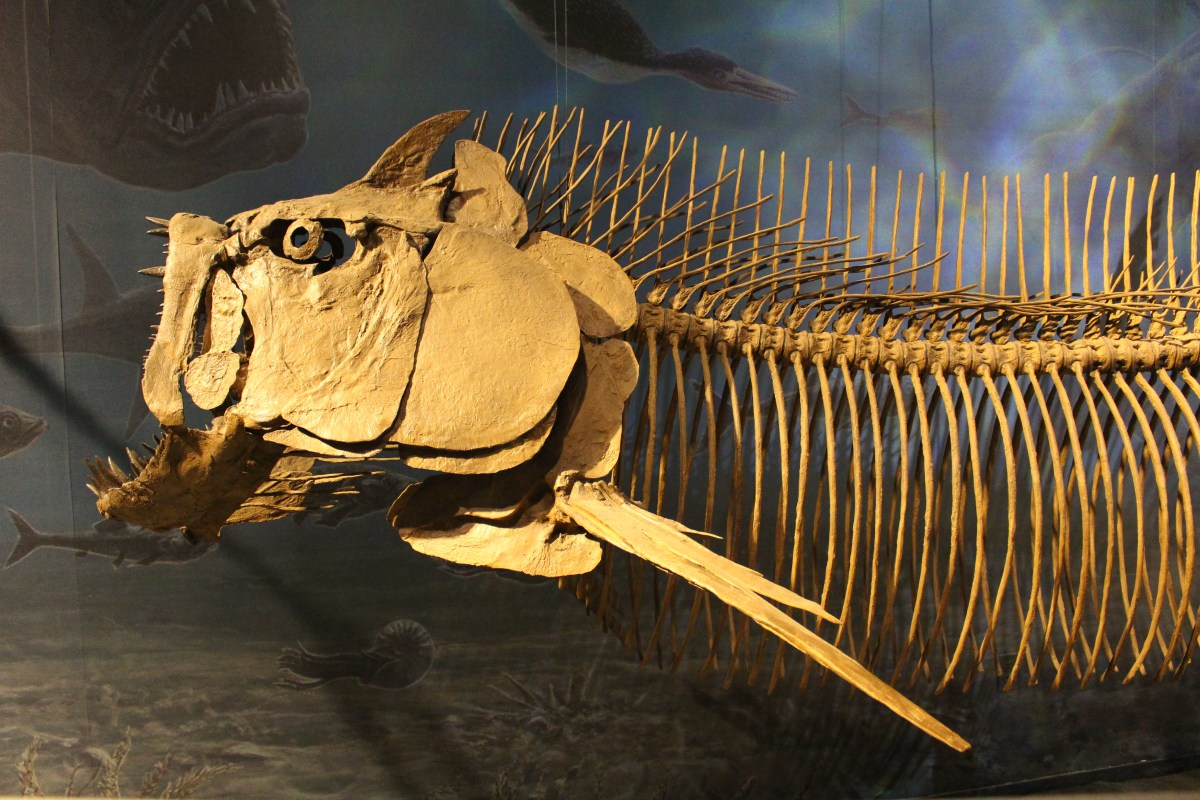
Xiphactinus
Archelon (“Ruler Turtle”) is a sea turtle fossil, which is rare in North Dakota. Some of the Cretaceous sea turtles grew as long as 15 feet. These turtles laid their eggs on land, where they were vulnerable to attacks by predators.

Archelon (“Ruler Turtle”)
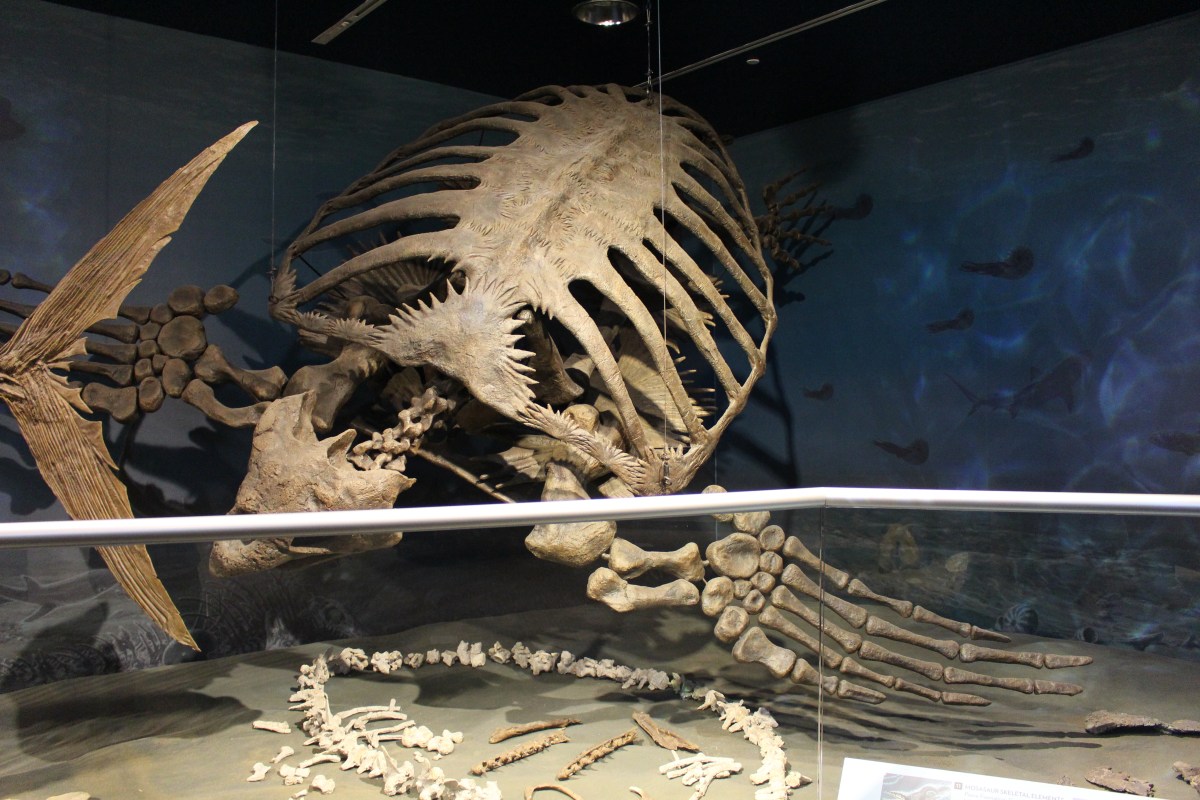
Archelon (“Ruler Turtle”)
Around 65 million years ago (during the Mesozoic Cretaceous Period 68 – 65,000,000 years ago), North Dakota was as warm as south Florida. Instead of plains, valleys and badlands, western North Dakota was covered with woodlands, ponds and swamps. Many exotic plants and animals lived here, including dinosaurs. Unusual animals such as mosasaurs (40-foot-long sea marine lizards), also lived in the ocean that still covered eastern North Dakota.
Tyrannosaurus rex (“tyrant lizard king”) was one of the largest carnivorous dinosaurs. It was bigger than Triceratops, growing to 40 feet long and weighing about eight tons. A keen sense of smell and the ability to travel at high speeds for short distances made them fearsome hunters. While no complete skeletons of T. rex have been found in North Dakota, its teeth and bones have been recovered from several fossil sites in the state.

Tyrannosaurus rex
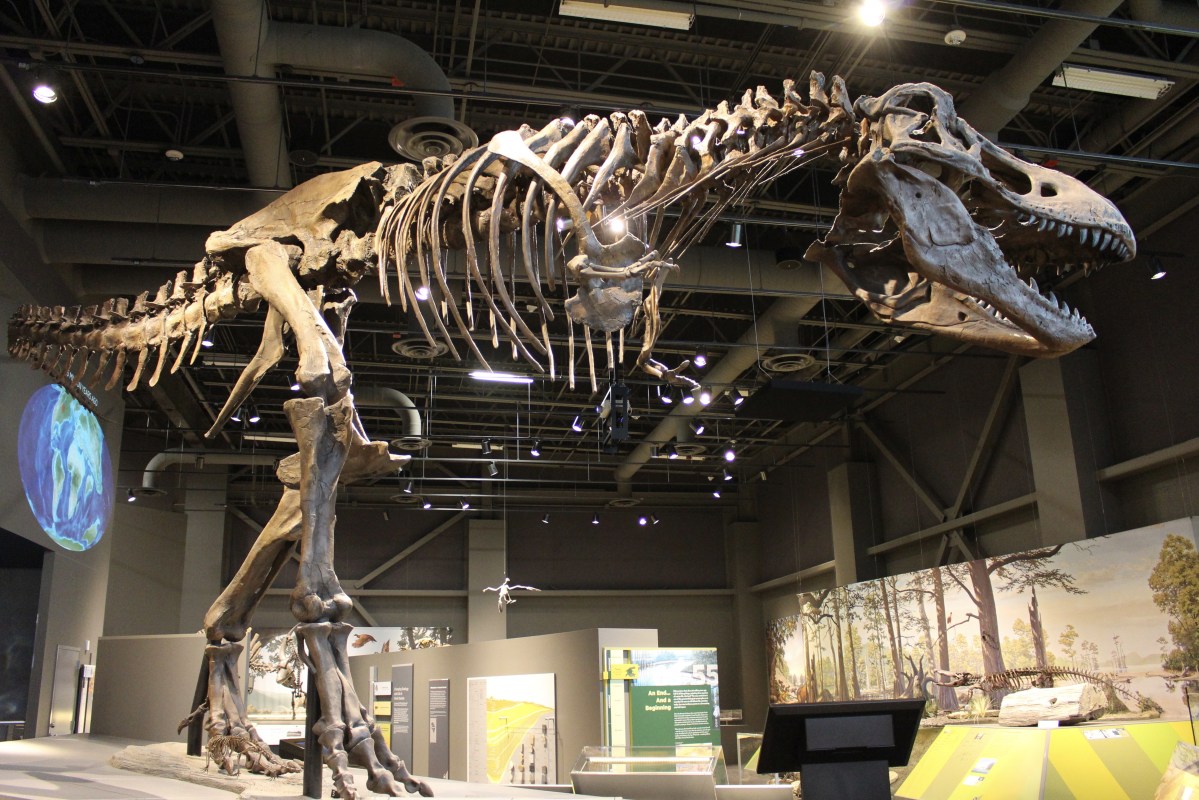
Tyrannosaurus rex
Triceratops (“three-horned face”) was one of the largest and heaviest of the herbivorous, or plant-eating, horned dinosaurs. Growing to 30 feet long and weighing as much as 5 tons, this dinosaur would be larger than the biggest African elephants today.
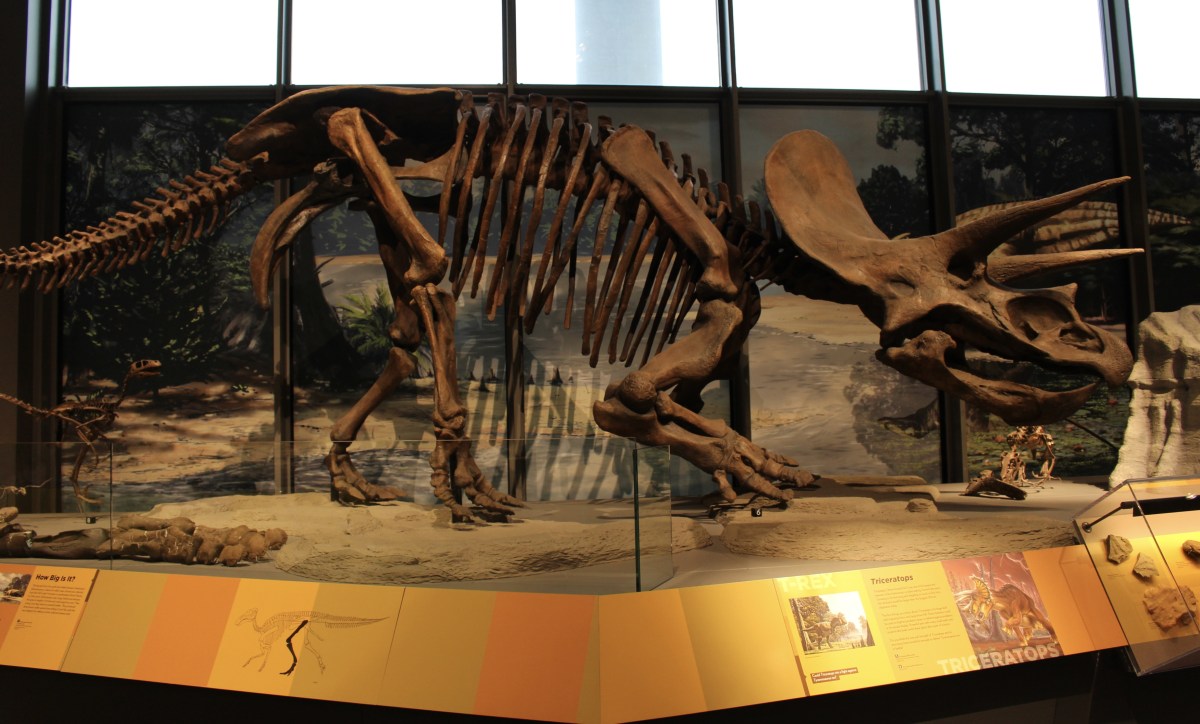
Triceratops
Dromaeosaurus (“Swift running lizard”) was part of the family of small, ferocious predators often called raptors. A large claw on each hind food was used to slash through flesh. It had a large brain and may have hunted in packs like wolves.
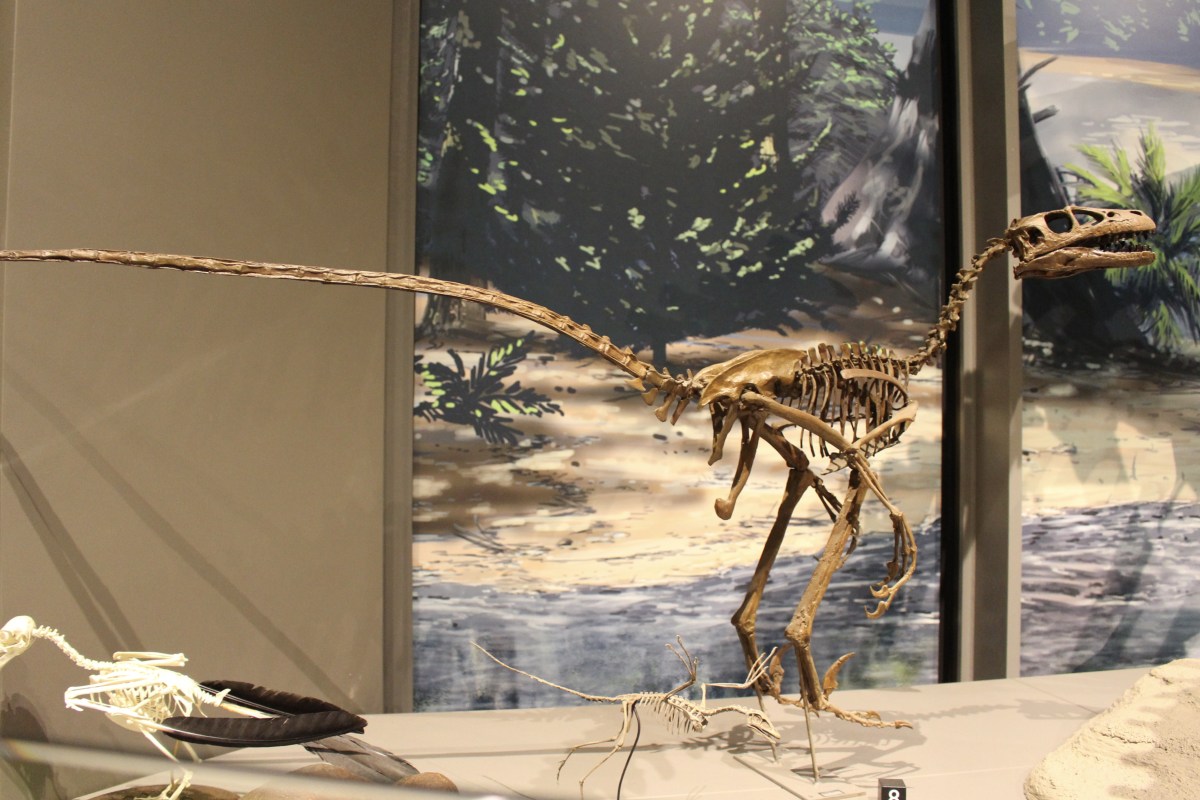
Dromaeosaurus
About 65 million years ago, half of all living things, including three-quarters of marine life, died out. This mass extinction is one of the greatest biological catastrophes ever recorded. Its cause is still debated by scientists today, but most evidence points to a devastating asteroid impact.
Once the dinosaurs died out, in the Cenozoic Tertiary period (65-55,000,000 years ago), other species flourished in North Dakota’s forested swamplands. Across the globe, climates were warm and humid, creating a welcoming environment for plants and animals to recover. New predators gained dominance, and other species evolved. In this new era, crocodiles, alligators and champsosaurs (crocodile-like reptiles) became top predators, preying on all types of fish, birds and even mammals. Mammals started to become the dominant life forms during this time.
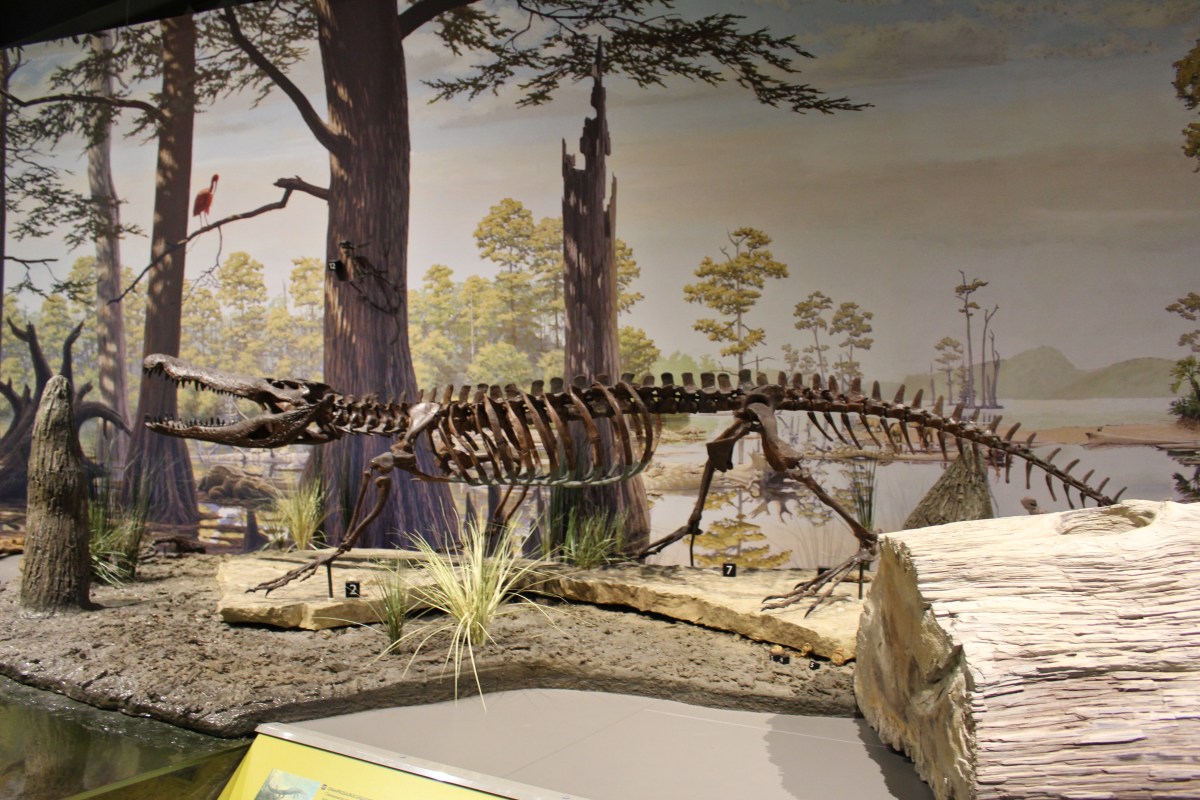
crocodile
By the end of the Oligocene Epoch, the number and diversity of mammal species in North Dakota had increased dramatically. Cooler temperatures and open scrublands and grasslands were perfect habitats for large groups of grazing mammals, while small woodlands around lakes and rivers supported smaller animals like rodents.
Fossil evidence shows that North Dakota was once the home of huge rhinoceros and giant pig-like animals, as well as saber-toothed, cat-like mammals called nimravids. Although these species became extinct, many of the ancient mammals were members of groups that still exist today, including ancestral dogs, camels, deer and mice.
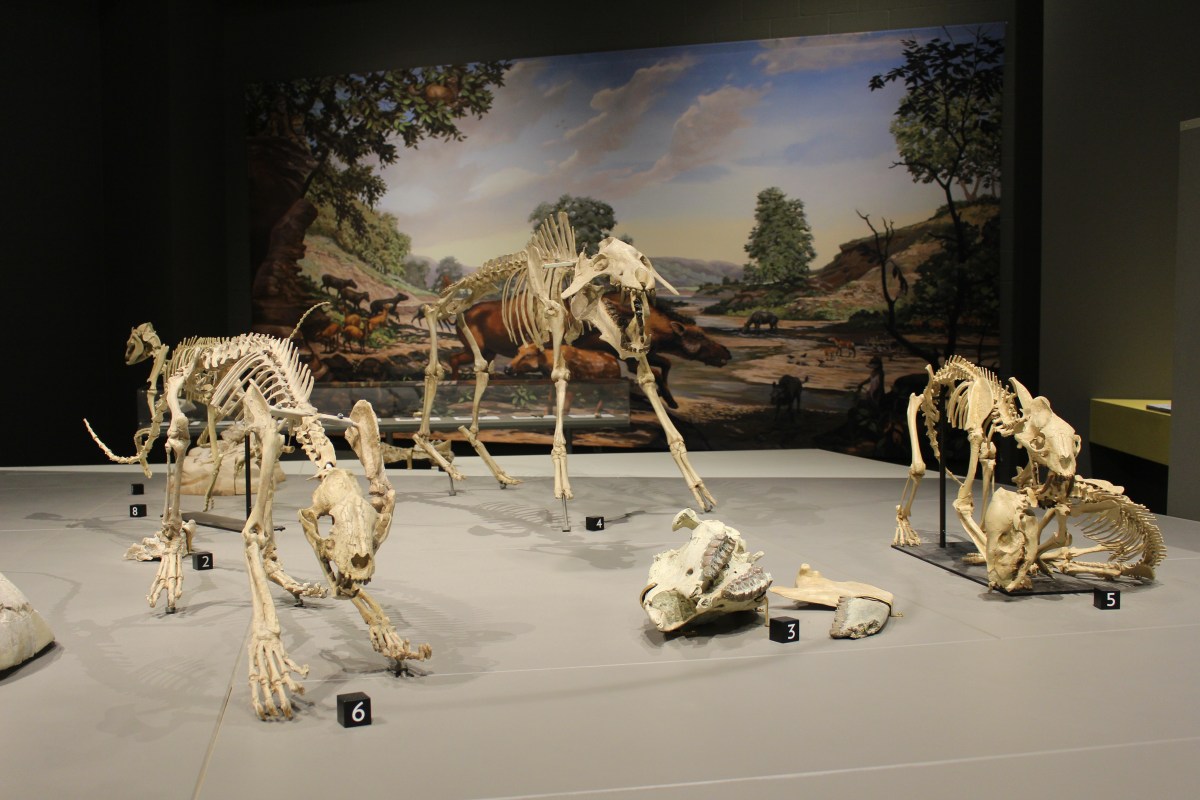
mammals
Nearly all large mammals during this time, including mammoths and mastodons, became extinct in North America between 11,000 and 9,000 years ago. Only the medium-sized (bison, deer, pronghorns) and smaller mammals survived.
The large and agile creatures known as Bison antiquus were the ancestors of modern bison. Larger than bison we know today, Bison antiquus lived in herds and fed on the grasses and low-growing shrubs of the North Dakota landscape. They became extinct about 10,000 years ago.

Bison antiquus
The possible causes of the extinction of the large mammals has been debated for decades. One of the most controversial theories, termed the “overkill hypothesis,” suggests that mammals were hunted to extinction by humans. Others argue that the large mammals became extinct because they could not adapt to rapid climate warming and habitat changes. Possibly these and other factors all played a role in the extinction of 32 species of mammals.

backside of prehistoric creature

more prehistoric creatures
Mastodons were large mammals that looked and acted much like today’s elephants. Thick, long hair covered their bodies. They were browsing animals like today’s moose. They lived in coniferous forests and ate tree twigs, leaves, and marsh vegetation. Mastodons lived in North America at the end of the last Ice Age, about 10,000 to 20,000 years ago. They lived millions of years after dinosaurs had become extinct. People followed herds of large animals, such as mastodons, across vast distances. The animals were hunted for their meat, hides and bones.
In 1890, workmen excavated this mastodon skeleton near Highgate, Ontario, Canada. For the next eight years, the bones were on tour in Canada, North Dakota, and Minnesota.
The owner donated the bones to the University of North Dakota in 1902. The university donated the skeleton to the State Historical Society of North Dakota in 1947.

Mastodon

prehistoric creatures
I left this fabulous museum and went directly to Bismarck’s Art Alley.

leaving the North Dakota Heritage Center & State Museum
All information about the Geologic Time Gallery are from signs at the North Dakota Heritage Center & State Museum.
*Friday, September 13, 2019*




Wow! I an see why you lived this. Just look, for example, at the intricacy of that tail near the end. Fascinating.
LikeLike
It was an amazing museum, for sure, Anabel. Thanks!
LikeLiked by 1 person
I’m always amazed when I see fossils like this. It really brings these ancient creatures to life.
LikeLike
They were very well done, Carol. I thought it fascinating that these creatures lived all over North Dakota, which is a really dry area now.
LikeLike